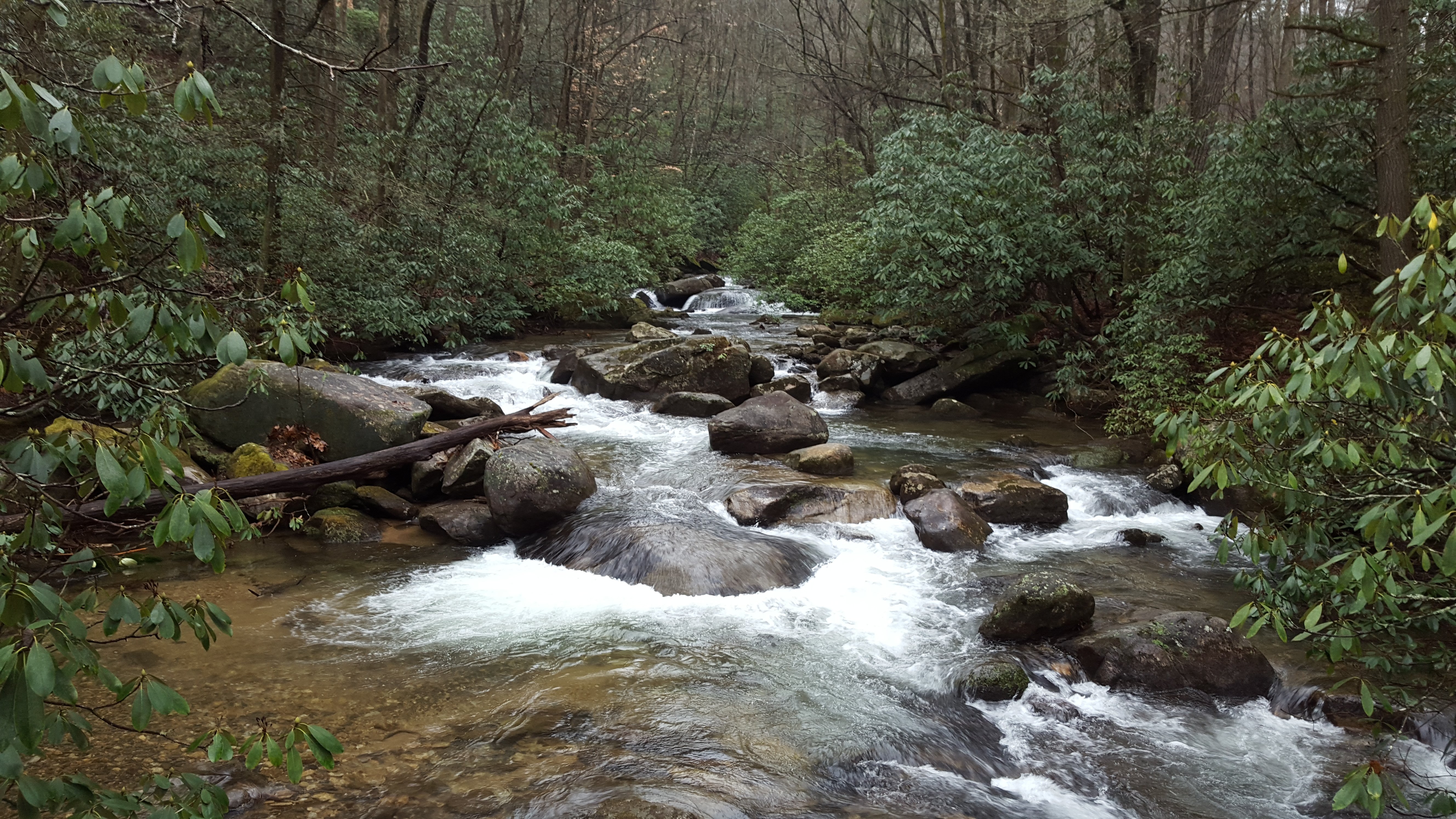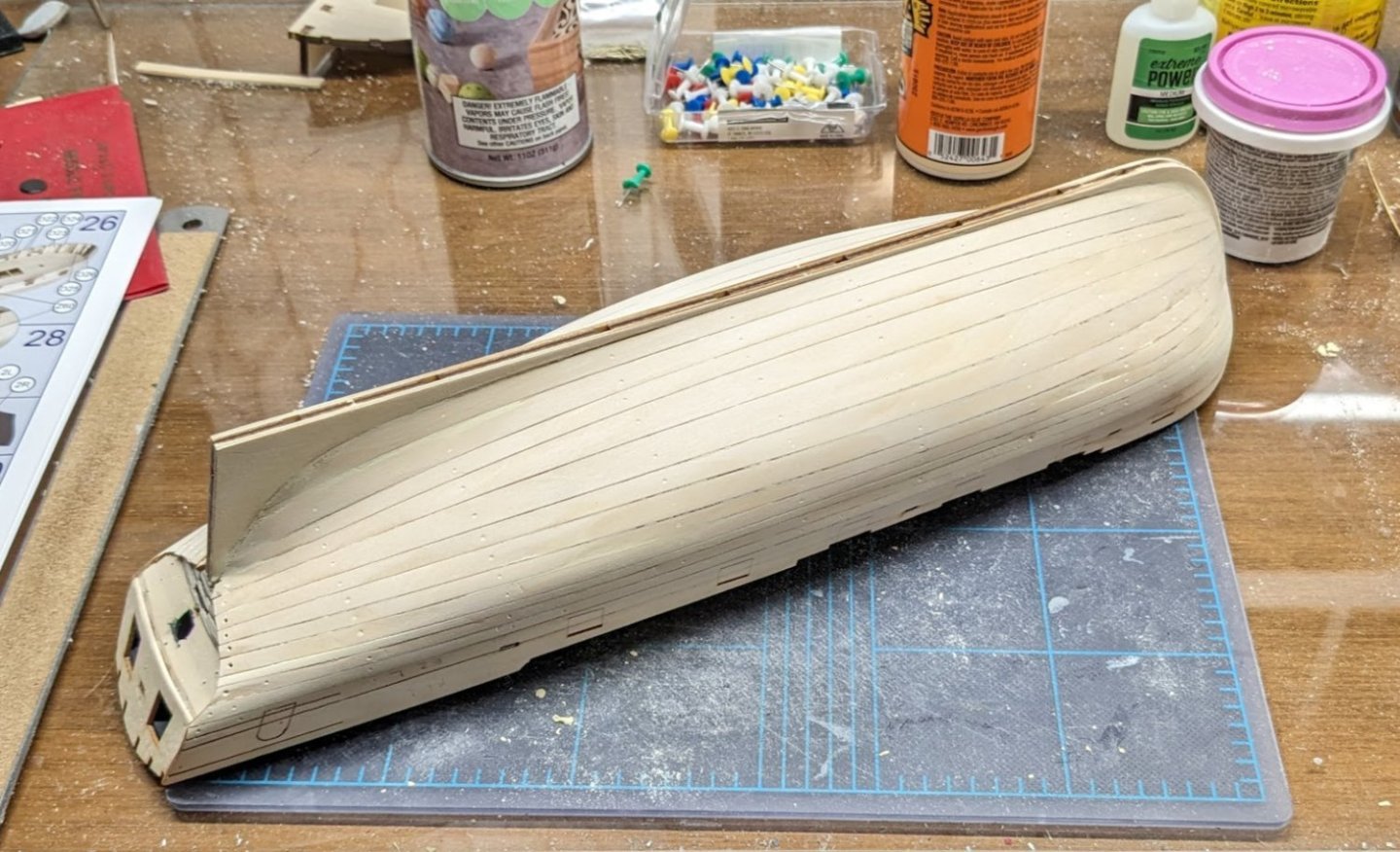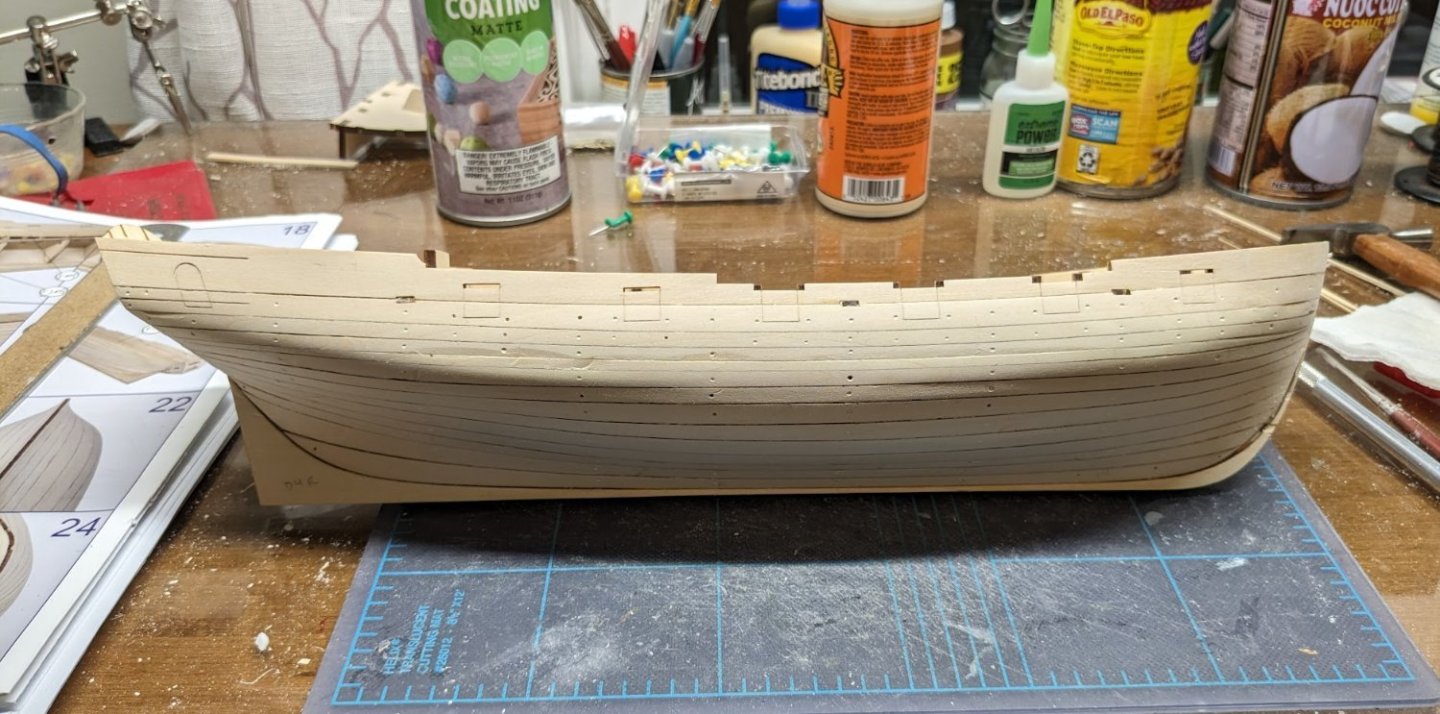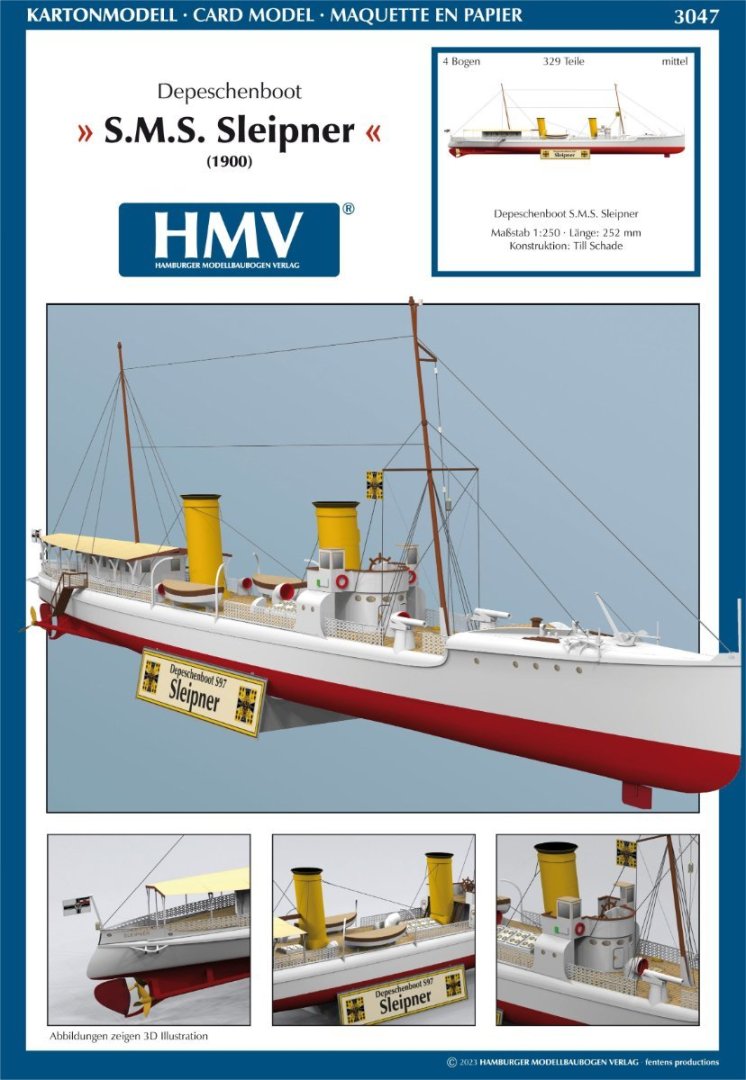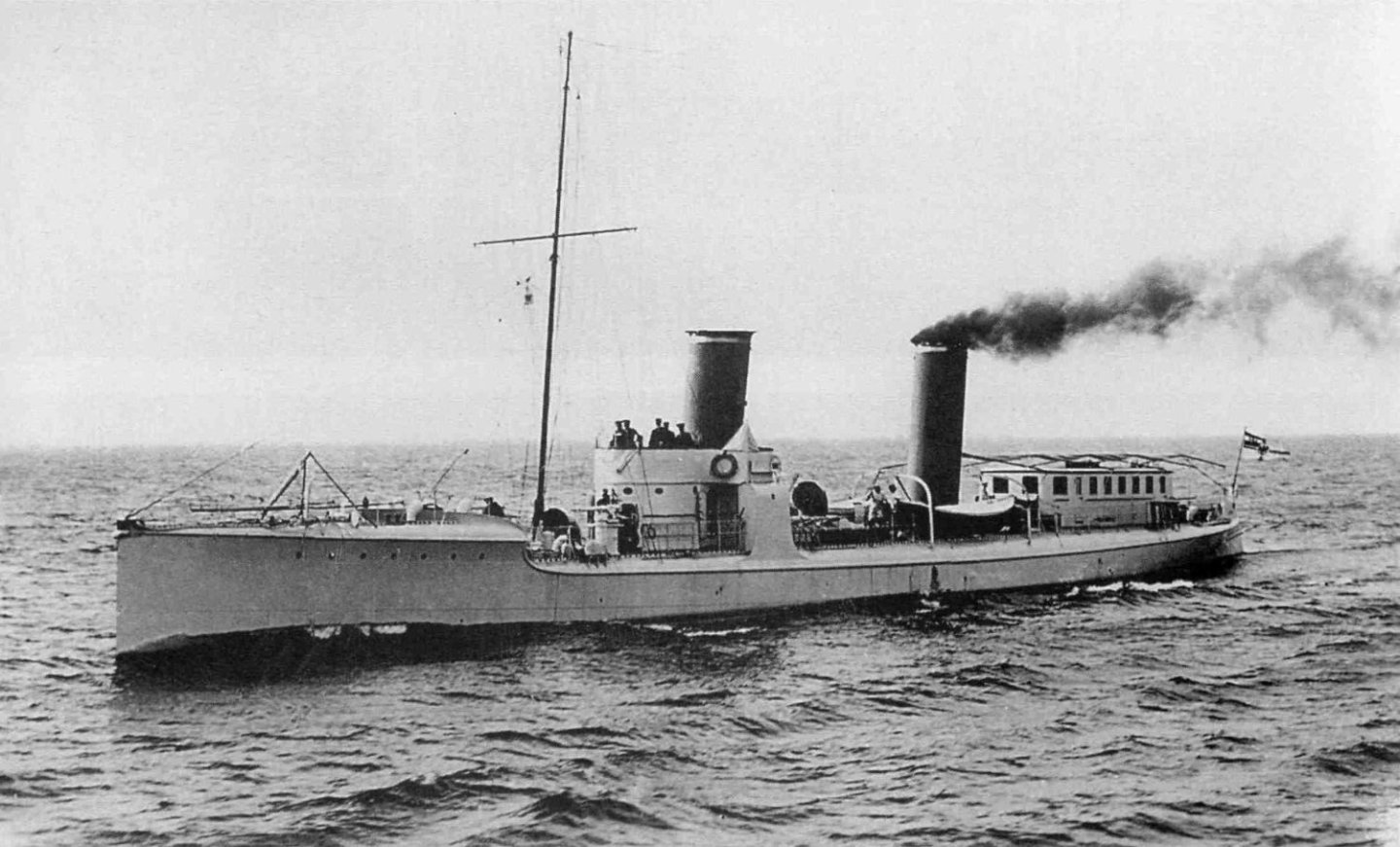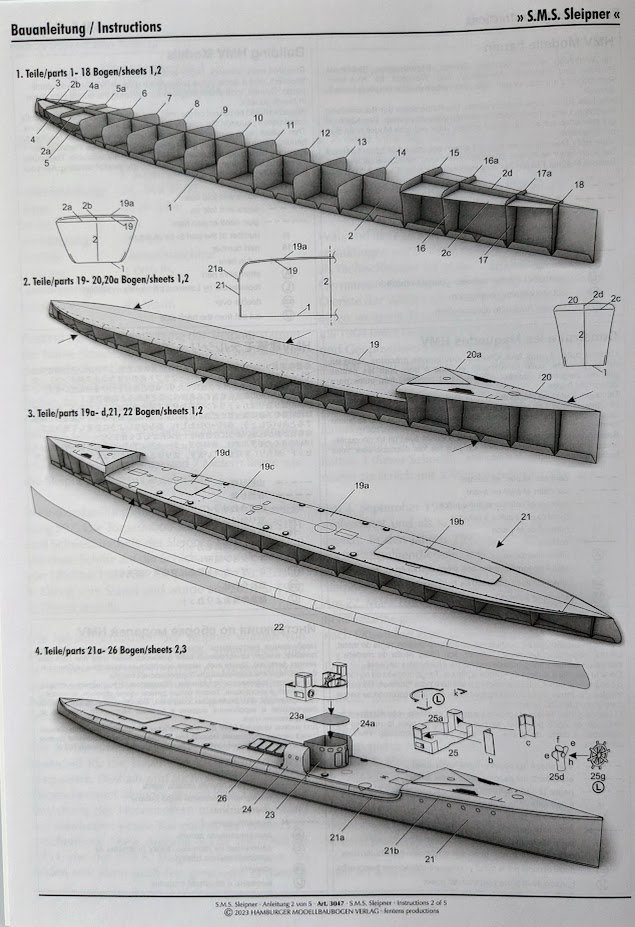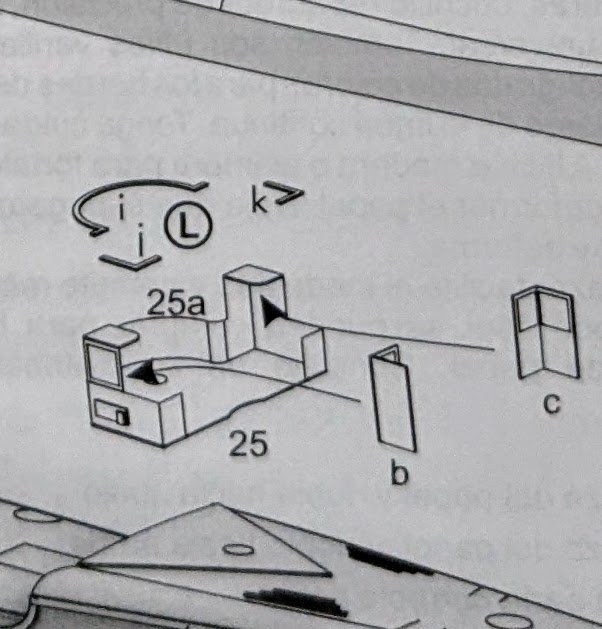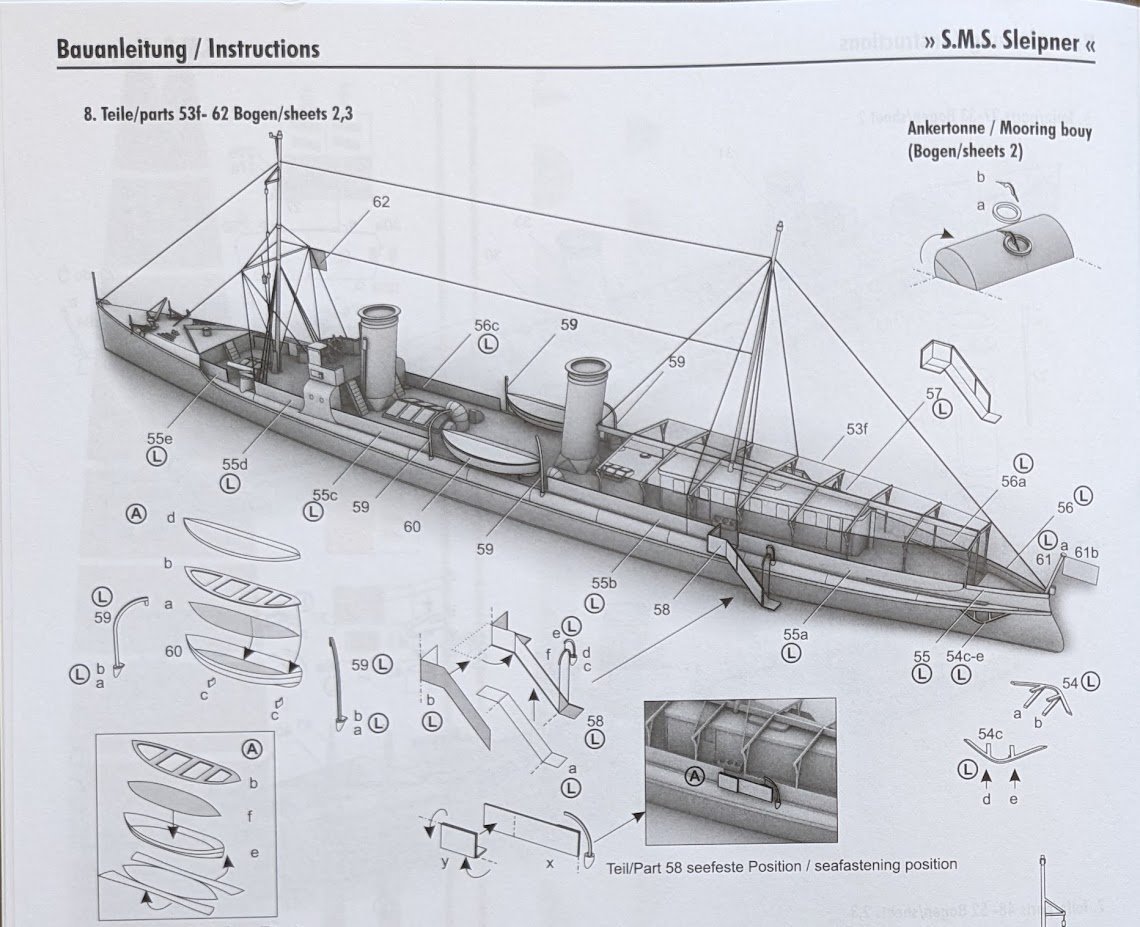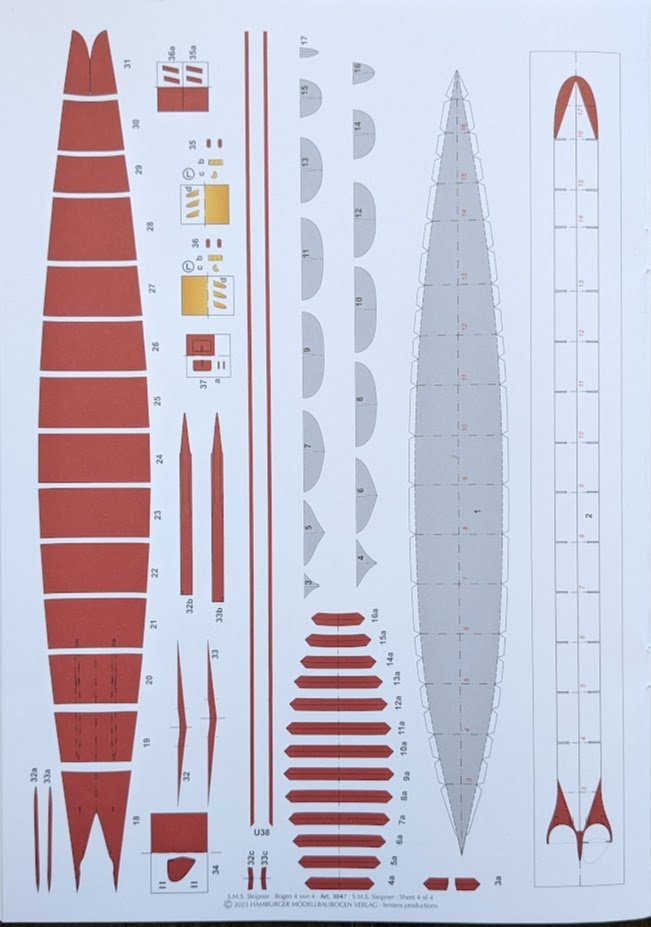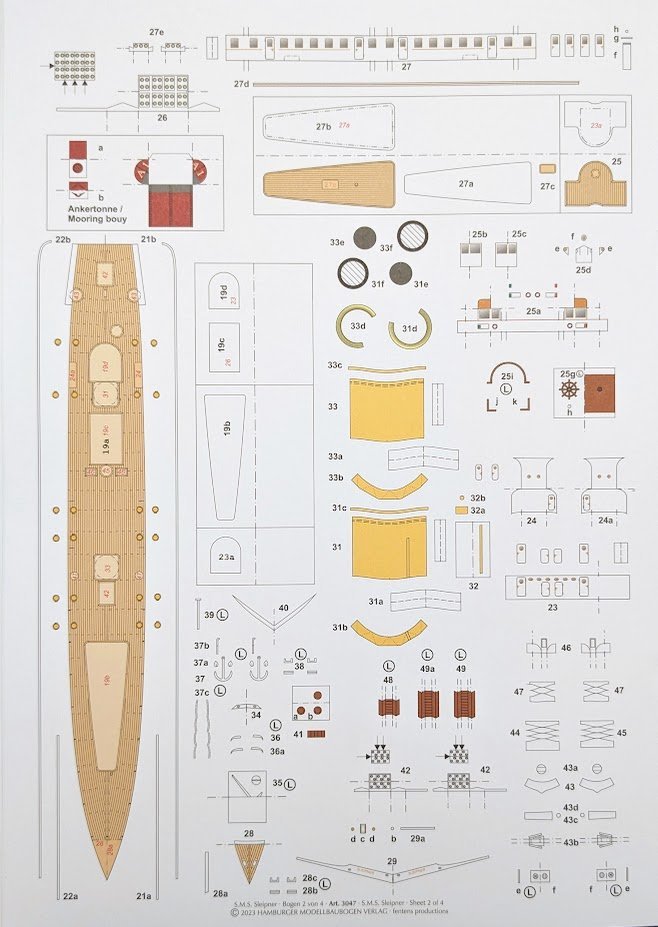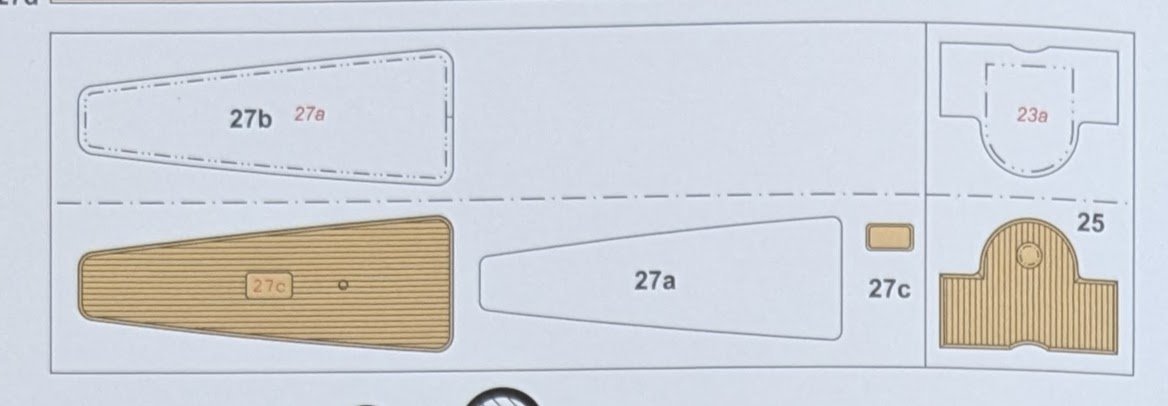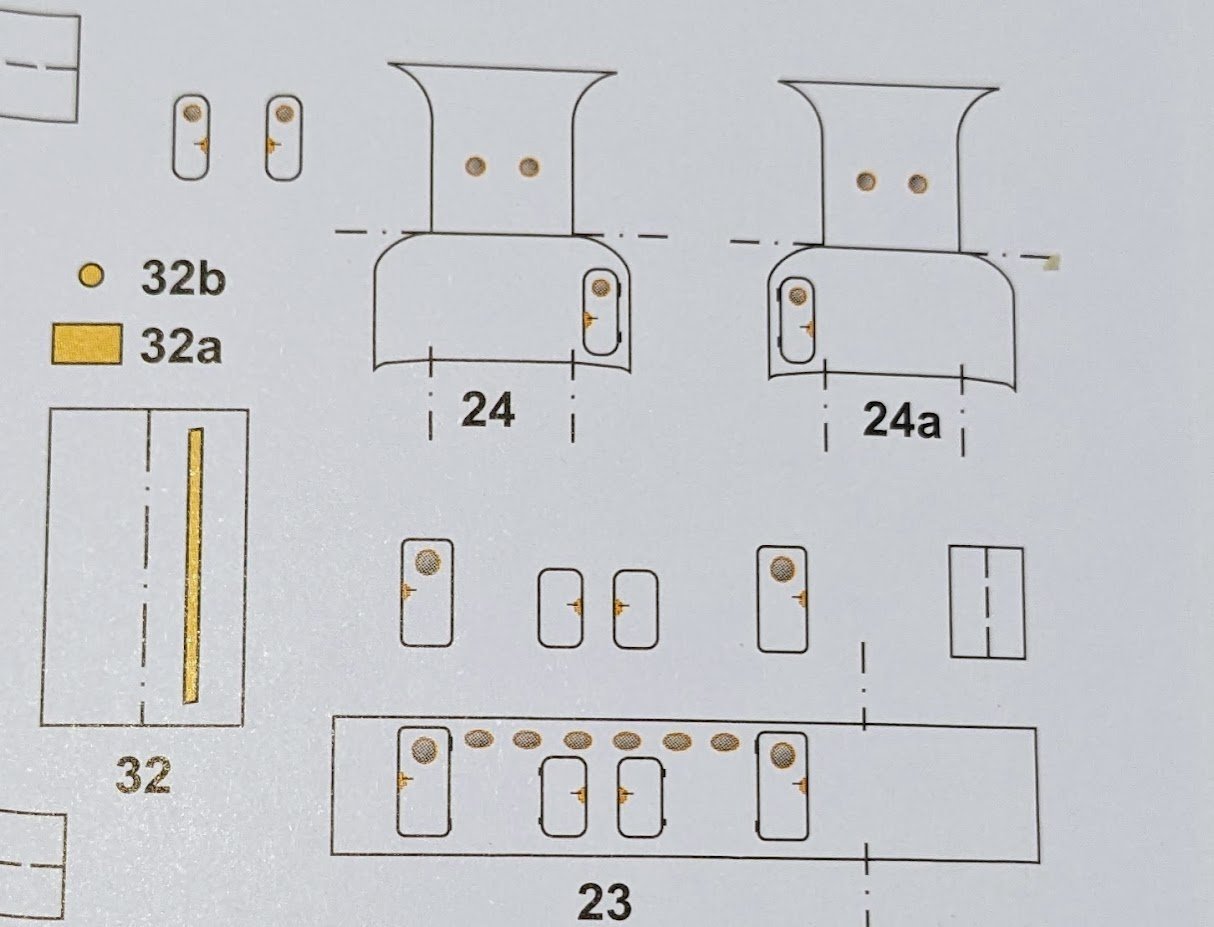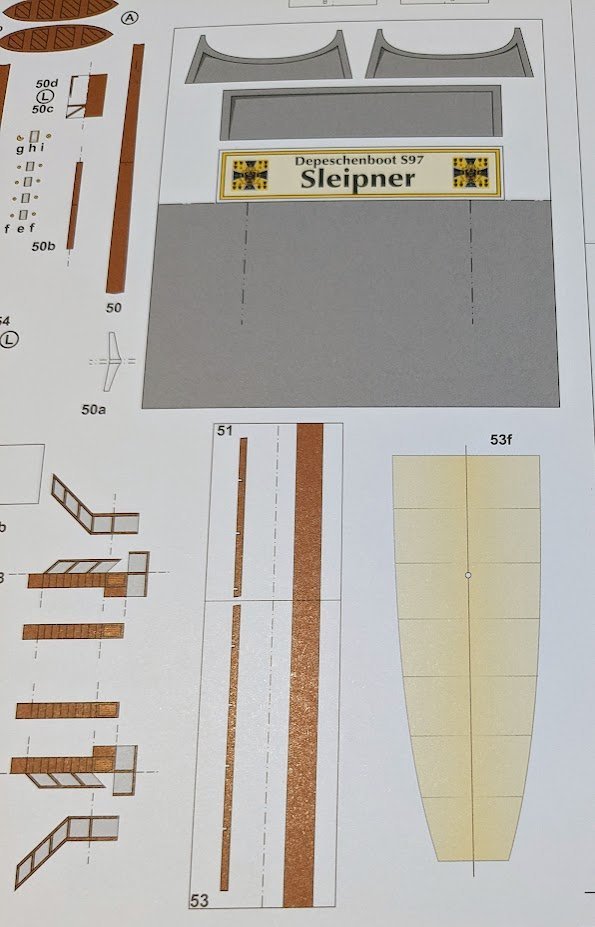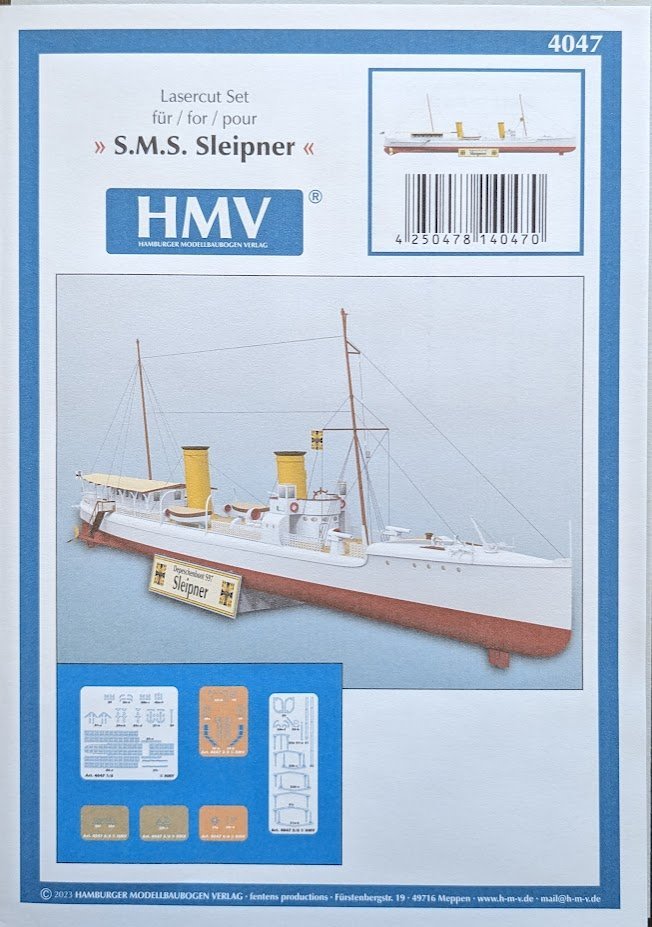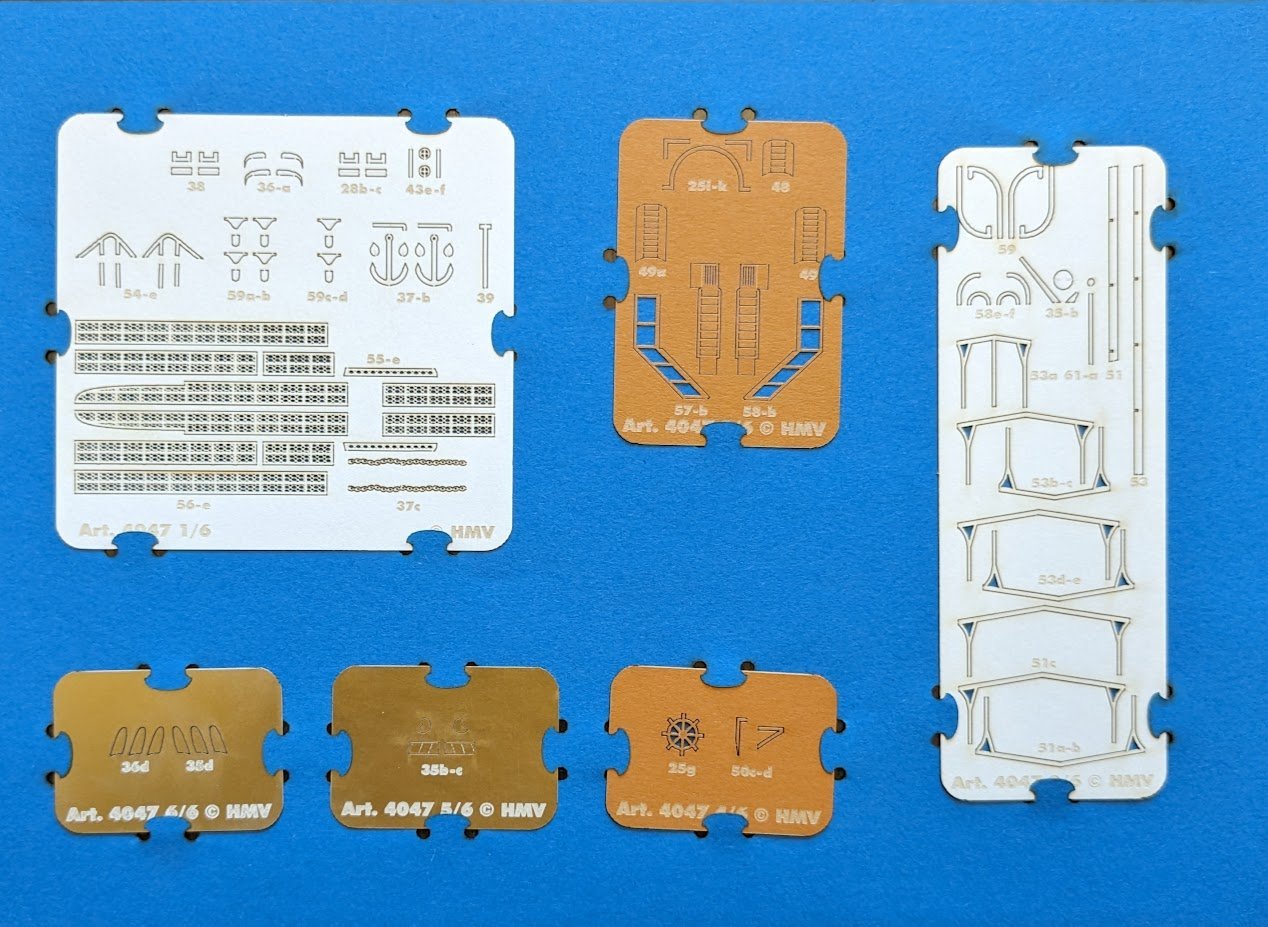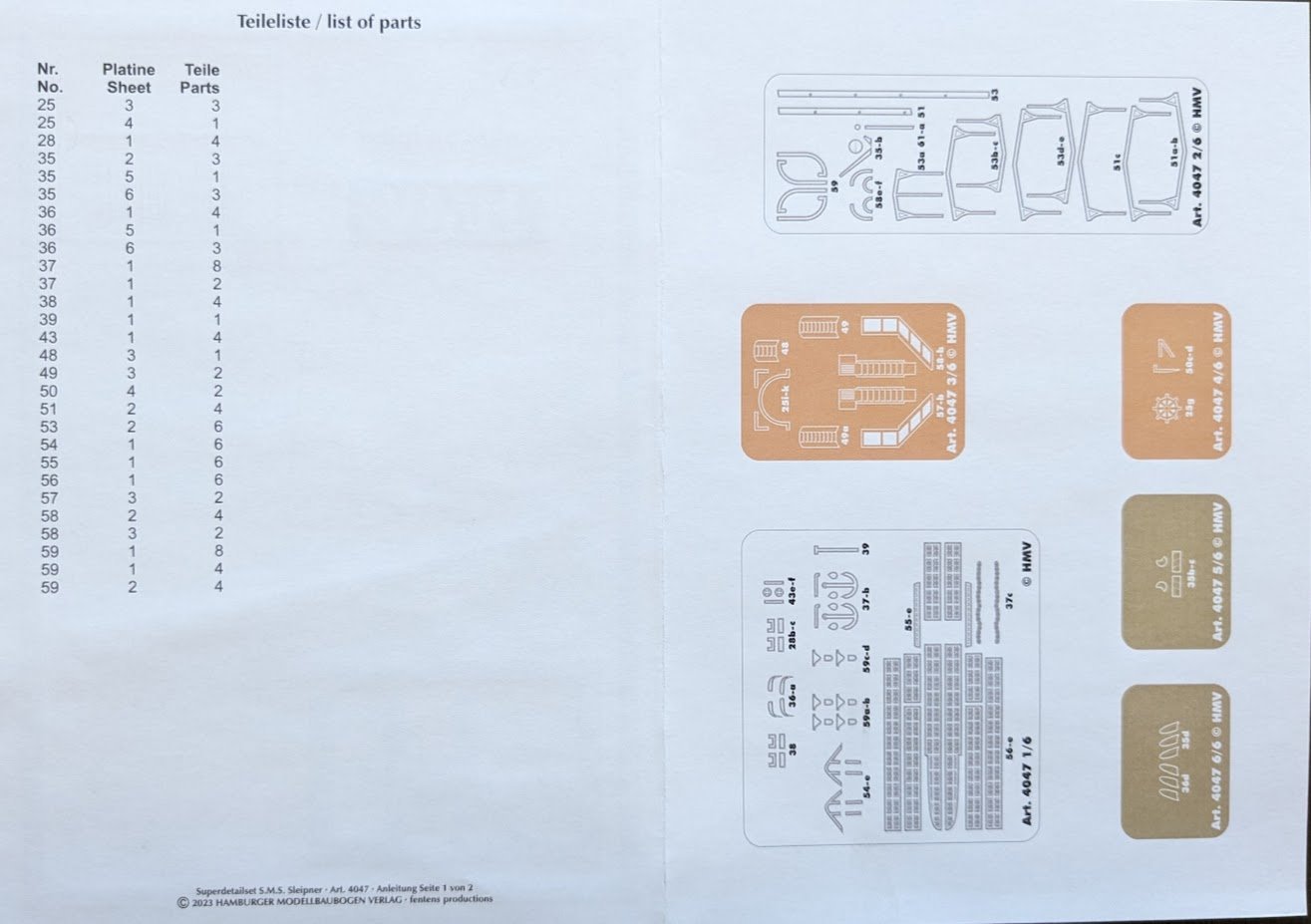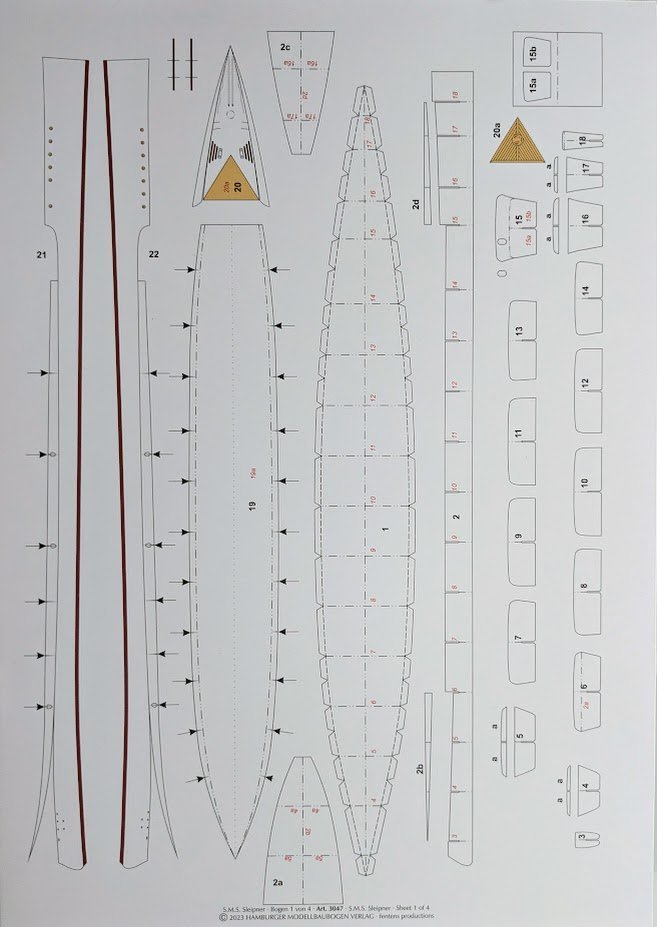-
Posts
9,747 -
Joined
-
Last visited
Content Type
Profiles
Forums
Gallery
Events
Everything posted by ccoyle
-
Your dory looks properly scruffy -- just as a working boat should!
- 13 replies
-
- Model Shipways
- Finished
-
(and 2 more)
Tagged with:
-

Roter Löwe 1597 by Ondras71
ccoyle replied to Ondras71's topic in - Build logs for subjects built 1501 - 1750
Gorgeous! -

USS Iowa BB-61: Anybody knows the structure midship?
ccoyle replied to JackSix's topic in Nautical/Naval History
That makes perfect sense. I found them online in the instructions for a kit, but they weren't labeled -- they looked gun-like, but without the rest of the gun it was hard to say what they were. -
Welcome aboard, Dindsy, and good luck on your project!
-
Welcome aboard!
-
Congratulations on completing the set!
- 61 replies
-
- Muscongus Bay Lobster Smack
- Model Shipways
-
(and 1 more)
Tagged with:
-
I should note for those that hate spiling, like me, that only the last plank on each side required any shaping. All of the planking is laser-cut and pre-spiled, but it's understood that every model will be slightly different in terms of fit and coverage, so the last plank needs to be shaped to fill the last bit of remaining space. I had to remove ~1/3 of the last planks to get them to fit.
-
Are you talking about the forestays, or the need to run some of the running rigging through the ratlines/shrouds?
- 24 replies
-
- Lady Nelson
- Amati
-
(and 2 more)
Tagged with:
-

Museumvillage
ccoyle replied to Museumvillage's topic in Building, Framing, Planking and plating a ships hull and deck
Think you may have posted this in the wrong section. -
I feel your pain. I don't use the waste basket for builds like this, but I do have a "shelf of shame" where incomplete models go to languish in whatever state my lack of mojo left them in.
-
I hope this step goes well -- rolling a neat tube of that length has got to be a challenge.
- 37 replies
-

kit review SMS Sleipner by Hamburger Modellbaubogen Verlag
ccoyle posted a topic in REVIEWS: Model kits
SMS Sleipner 1900 1:250 HMV Catalogue # 3047 Available from Fentens Papermodels for €13.99. All images by the author except where noted. Image courtesy of Fentens Papermodels History From the publisher’s website: “The name Sleipner comes from the eight-legged horse Sleipnir of the Nordic god Odin. The name of this extraordinary horse describes gliding on land, water and in the air. How fitting for an elegant dispatch boat like the Sleipner. The torpedo boat's maximum speed was around 26.5 knots, which was impressive at the time, and with a length of 61 meters and a width of 7 meters, the Sleipner was quite impressive. Image from Wikimedia Commons: https://upload.wikimedia.org/wikipedia/commons/7/79/SMS_S_97.jpg When commissioned, SMS Sleipner carried the designation S97. The torpedo boat destroyers S90 to S101 are sister ships of the Sleipner. All of these ships were built at the Schichau shipyard between 1898 and 1901. S97 Sleipner was launched in Elbing on December 16, 1899 and was put into service on May 28, 1900. Sleipner's two propellers were powered by two triple steam engines and Schichau-Thornycroft water-tube boilers were used. The maximum water displacement was 394t. The ship was supposed to have a crew of 49 men. The SMS Sleipner was intended from the start as an escort ship for the imperial yacht Hohenzollern. That's why we often talk about the imperial dispatch boat Sleipner. The usual accompaniment of the Hohenzollern when traveling consisted of at least one warship and a dispatch boat. This task was carried out from 1900 to 1914 by SMS Sleipner. Many pictures show Hohenzollern with Sleipner somewhere in the background. The Hohenzollern's journeys took Sleipner, among others, to Venice, to Alesund, and also to the Norwegian south coast. It happened that the emperor himself was on board SMS Sleipner and he used the ship for visits or events occasionally. During the Kieler Woche and similar sailing events the SMS Sleipner occasionally worked as a yacht tug for large sailing yachts such as Germania or Meteor. The dispatch boat also was applied to the service of science and on July 1, 1904, under the direction of the German meteorologist and geophysicist Hugo Hergesell and the French naval officer Sauerwein, it brought a kite probe to a height of 1,880 meters. The Sleipner's armament consisted of 2 rapid-fire cannons of caliber 5 cm, which were used as saluting guns. The torpedo boat sister ships had 3 of these rapid-fire cannons on board and were also equipped with 3 torpedo tubes. On September 4, 1914, the Sleipner was renamed T97 and used as a coastal defense ship. In 1917 and 1918 she also performed patrol duties and served as an escort ship. After the war, the former Sleipner served in the Reichsmarine for a short time. On March 22, 1921, T97 was struck from the register of the Reichsmarine and then sold to Düsseldorf for demolition on May 26, 1921.” The Kit HMV (Hamburger Modellbaubogen Verlag) have added another tempting kit to their lineup of high-quality card models in 1/250 scale. This time, the subject is one we don’t often see, if ever, in the card medium—a handsome dispatch boat from Europe’s Belle Époque. The cover of the kit (see above) features several digitally rendered views of SMS Sleipner. The ship’s sleek lines suggest that Sleipner was built for speed, as indeed she was, considering her torpedo boat heritage. But other visual cues hint at her more aristocratic and less-deadly purpose, such as her lack of armament, ornate railings, and awning-covered salon. The cover also informs us that the kit consists of 329 parts and has a difficulty rating of mittel (intermediate), suggesting that the kit is appropriate for anyone having a few card models already under their belt. At 252 mm in length, the finished model will not make huge demands on anyone’s limited display space. Let’s look inside the kit and see what you get! Instructions/Diagrams As is typical with HMV kits, there aren’t any written instructions other than a very brief overview consisting of a list of required tools, general tips for building card models, and a key for the various codes used in the diagrams. A circled letter ‘L’, for example, means that the indicated part can be replaced with a part from the optional laser-cut detail set. Fortunately for us, HMV’s diagrams are first-rate and cover all phases of construction. Parts Not all of HMV’s kits have full hulls, but this one does. The design gives the builder the choice of building either a full-hull or waterline model. The hull is designed with the usual HMV “egg crate” construction. Sleipner’s hull has noticeable turtle-back joints between the deck and hull sides, and this might be one of the trickier aspects of the model to pull off neatly. The printing is crisp, and the registration is flawless. Sleipner wears the white topsides and buff funnels of the peacetime German Imperial Navy. The design includes doubled elements (see part 27a below) that will make the proper location of superstructure features, such as the salon walls, much easier than was possible using the old folded-tabs method. Optional parts are included for adding depth to printed elements such as watertight doors. Nice additional touches include a stand and an optional sunshade. Laser-Cut Detail Set To help cope with some of the smaller and more delicate parts of the model, a set of laser-cut detail parts is available to purchase separately. The set consists of six frets in various colors, including metallicized card for the propellers. Particularly nice are the lattice-work railings. The part numbers for the set are laser-engraved on each fret, but—just in case—the set includes a list of all the parts in the set and a pictorial key. Conclusion For years now, card modelers have counted on HMV to publish new kits depicting attractive subjects that tend to be off the beaten path, with an emphasis on Germany’s rich maritime heritage. Sleipner slots into the HMV lineup very nicely. With high-quality graphics, clear construction diagrams, and the option to use laser-cut details, Sleipner should appeal to all fans of card model ships, from novice builders to seasoned veterans. Sincere thanks are due to Benjamin Fentens at Fentens Cardmodels (see link at top) for providing this example for review. Tell them you read about it at Model Ship World! -
Welcome aboard, Tim!
-
Congratulations on finishing! If you have limited experience with wood, I'd recommend Flirt.
-
Welcome!
-
My wife might respond by saying that 0" of ship is the appropriate length for our home. That said, I prefer projects that tend to the smaller side of things, and that makes small-ish subjects attractive, because they can be built at larger scales and therefore be more detailed. Now with that said, I might just have to create whatever space is required if you were to develop a CA Thayer kit!
About us
Modelshipworld - Advancing Ship Modeling through Research
SSL Secured
Your security is important for us so this Website is SSL-Secured
NRG Mailing Address
Nautical Research Guild
237 South Lincoln Street
Westmont IL, 60559-1917
Model Ship World ® and the MSW logo are Registered Trademarks, and belong to the Nautical Research Guild (United States Patent and Trademark Office: No. 6,929,264 & No. 6,929,274, registered Dec. 20, 2022)
Helpful Links
About the NRG
If you enjoy building ship models that are historically accurate as well as beautiful, then The Nautical Research Guild (NRG) is just right for you.
The Guild is a non-profit educational organization whose mission is to “Advance Ship Modeling Through Research”. We provide support to our members in their efforts to raise the quality of their model ships.
The Nautical Research Guild has published our world-renowned quarterly magazine, The Nautical Research Journal, since 1955. The pages of the Journal are full of articles by accomplished ship modelers who show you how they create those exquisite details on their models, and by maritime historians who show you the correct details to build. The Journal is available in both print and digital editions. Go to the NRG web site (www.thenrg.org) to download a complimentary digital copy of the Journal. The NRG also publishes plan sets, books and compilations of back issues of the Journal and the former Ships in Scale and Model Ship Builder magazines.

